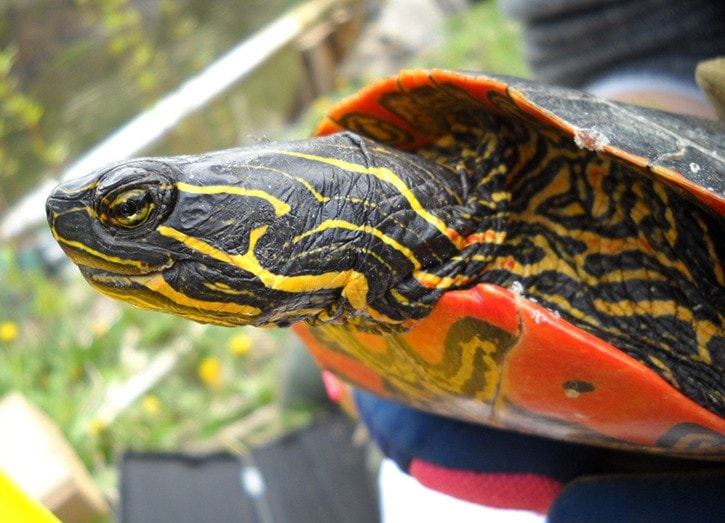It’s the time of year when female turtles begin their trek from ponds and slow-moving rivers to find a place to lay their eggs. From the end of May through June, females are looking for an ideal location to dig their nest and will often travel very long distances away from the water and even cross roads.
Gravel roadsides with south-facing slopes and very little vegetation provide ideal nesting habitat, but are not very safe for turtles. Road mortality is a major threat to the survival our native western painted turtle populations. Female turtles will return to the same nesting area for many years, so it is important for nesting habitat to be located in safe areas where their risk from mortality and disturbance is low.
With financial support from the Fish and Wildlife Compensation Program (Columbia), the Ministry of Transportation and Infrastructure, and the Creston Valley Wildlife Management Area, turtle nest habitat is being enhanced along West Creston Road. This area is targeted because turtle crossing is frequent during nesting season along road sections that border the wetland.
Vast Resource Solutions Inc. is working with local volunteers, including the Royal Canadian Army Cadets, to construct gravel nesting beds away from the roadsides. The team will also be hand pulling invasive plants in these areas in order to suppress establishment in these sandy beds. Because turtles will continue to nest in areas where they did in previous years, fencing is bing installed to interrupt this movement pattern and direct them to the new nesting areas.
When you’re driving during the nesting season, make sure to watch for turtles crossing the road, particularly on warm nights around late afternoon and early evening. If you see a turtle at risk of being run over, you can help it cross the road, but make sure you consider the following:
•do not put anyone in danger, particularly other people using the roadway;
•place the turtle in the direction it was already going;
•place the turtle close to where you found it;
•when helping a turtle cross the road, handle it gently avoiding its claws and mouth; and
•wash your hands afterwards.
If you see a turtle crossing a road that is not very busy, and at low risk of being killed, it is best to leave the turtle because excessive handling of animals can be very stressful and may disrupt their normal activities.
Once the female has found her nesting spot be sure not to disturb her — nesting can take a few hours to complete. It is best to keep your pets on leash to prevent them from harassing turtles and potentially interrupting their nesting activity. If you’re out enjoying the weather or walking your pet, watch for small depressions in sandy, gravel areas as this may be a turtle nest. Eggs hatch in October and hatchlings do not emerge until the following spring. What this means is that disturbing the nests may harm the eggs or the hatchlings.
All are encouraged to become turtle stewards and watch for turtles during their seasonal migration between their hibernation/foraging sites and nesting sites this year.
For more information, contact VAST senior wildlife biologist Leigh Anne Isaac at LeighAnne.Isaac@vastresource.com.
—KIRSTIN EYOLFSON AND MICHAEL LEE, Vast Resource Solutions Inc.
